Humanity is always trying to subdue nature. We hack down jungles, dynamite our way through rock faces, and build on terrain previously underwater. But we don’t always get our own way. Sometimes, nature fights back, swallowing up entire settlements, sacred constructions, or palaces. Palaces like the 3,500-year-old palace of Kemune in Iraq, a construction from the Mittani Empire, which was flooded by the waters of Mosul Dam Lake before re-emerging after a recent drought. Whether strangled by thick jungle, buried beneath desert sands, or obliterated from the face of the earth by volcanoes, here are seven historic sites that have all been encroached upon — and eventually overtaken — by nature.
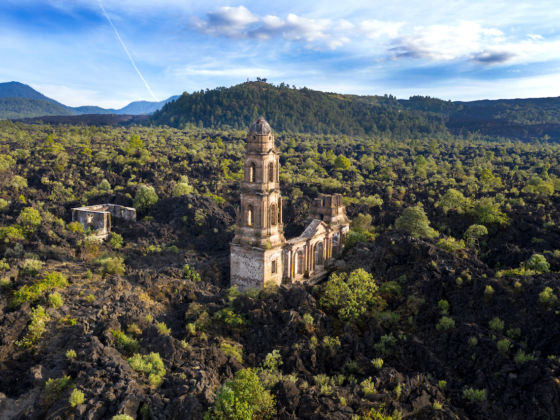
7 Historic Sites That Have Been Swallowed Up by Nature
1. Sigiriya, Sri Lanka’s ancient Lion Fortress

Photo: maloff/Shutterstock
Fifty-five miles north of the former royal capital of Kandy, the citadel of Sigiriya is perched atop a monumental granite rock that looms almost 600 feet above the surrounding jungle canopy. Its name means “Lion Rock,” which is a reference to the enormous, lion-paws gate that guards the entrance to the fortress.
Built between 477 and 495 AD, Sigiriya was briefly the capital of the Sinhalese kingdom. When the Sinhalese dynasty collapsed due to internal conflict, as well as invasions from India and colonial powers, former administrative centers were abandoned. As the former capital fell into disuse, the jungle began to take over; its location forgotten by all but the residents of nearby villages.
It wasn’t until the arrival of the British Empire that Sigiriya began of interest again. George Turnour, a British civil servant and passionate historian, began studying the Culavamsa — a Sri Lankan chronicle recounting the tale of King Kashyapa, who ordered the construction of Sigiriya. Turnour told the story to a Scottish officer named Jonathan Forbes, who resolved to track down the lost fortress. In 1831, he led the first of two expeditions to the rock, but was unable to scale the cliff faces and to prove whether or not he had found the citadel. Another 20 years passed before British mountaineers successfully summited the peak, “rediscovering” the ancient wonder in the process. Today, Sigiriya is a UNESCO World Heritage site and one of Sri Lanka’s most popular tourist attractions.
2. Thamugadi, the Roman military outpost buried beneath the Sahara
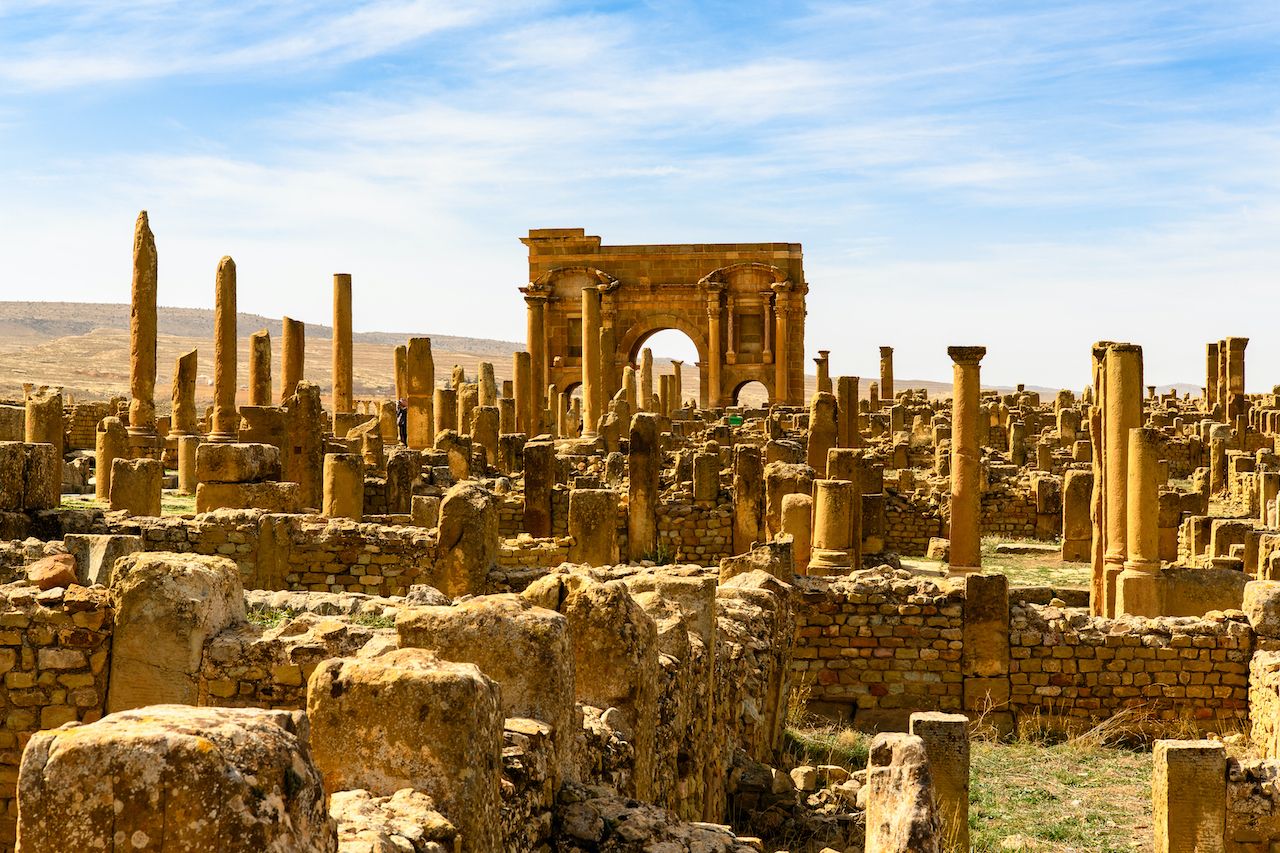
Photo: Anton_Ivanov/Shutterstock
Also known as Timgad, Thamugadi was a thriving Roman city and military outpost, founded around 100 AD by Emperor Trajan near modern-day Algeria’s Aurès Mountains. Its prosperity proved to be its undoing, attracting frequent attacks from raiders. After repeated offensives, it was ultimately abandoned in the 700s. That left it at the mercy of the Sahara, which blew in and buried the city under desert sand.
It was to remain uninterrupted until 1765, when Scottish explorer James Bruce and Florentine artist Luigi Balugani stumbled across the site. Immediately identifying it as the city founded by Trajan more than a millennium earlier, Bruce and Balugani set about clearing away the sands, discovering a succession of sculptures, an amphitheater, and a triumphal arch. Yet their findings were greeted with skepticism in Europe, and another century passed before British consul Robert Lambert Playfair visited the area. The French assumed control of the region in 1881 and quickly set about unearthing Thamugadi. To this day, it remains one of a few Roman cities to be completely excavated.
3. The ancient Angkor temples near modern-day Siem Reap in Cambodia
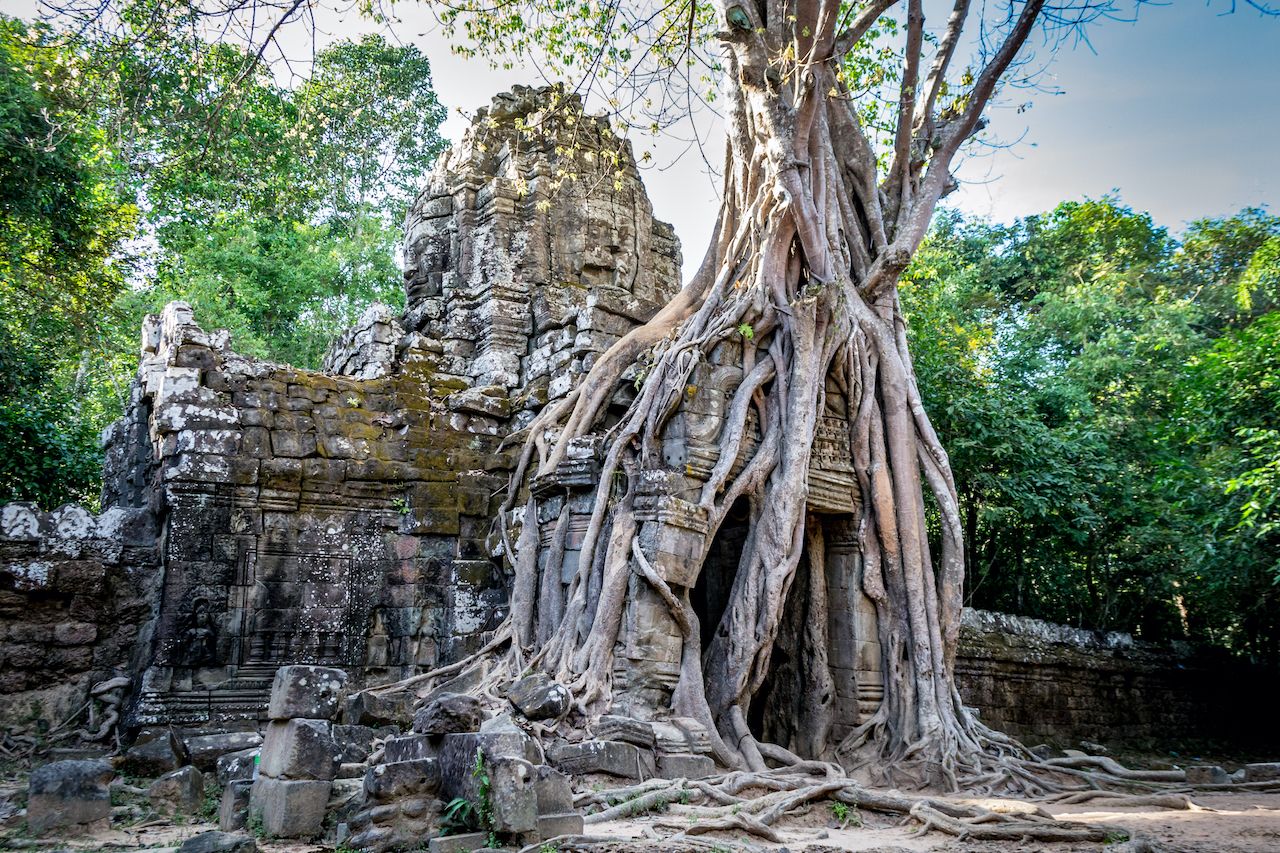
Photo: TurneroundDesigns/Shutterstock
The former center of the once-mighty Khmer Empire, Angkor is a 155-square-mile complex containing 70 ruined temples. Once you witness the grandeur of Angkor Wat — the largest religious structure ever built — it seems inconceivable that this sprawling site was ever lost to the outside world. Yet that’s exactly what happened. In the 15th century, when the Khmer Empire declined, the site was abandoned and nature took over.
The site was never truly lost, but it was only after the visit of French explorer Henri Mouhot in the mid-19th century that it caught the attention of the outside world. While the vegetation has largely been beaten back from pristine ruins like Angkor Wat and the labyrinthine temple of Bayon, others — most famously the so-called “Tomb Raider temple” of Ta Prohm — are still enclosed by thick jungle. Strangler fig trees envelope columns, arches, and towers; removing them would likely cause the ancient stonework to collapse. This spellbinding combination of nature and man-made structures has helped to make Angkor Cambodia’s top tourist attraction.
4. The Dolmen of Guadalperal, Spain’s answer to Stonehenge
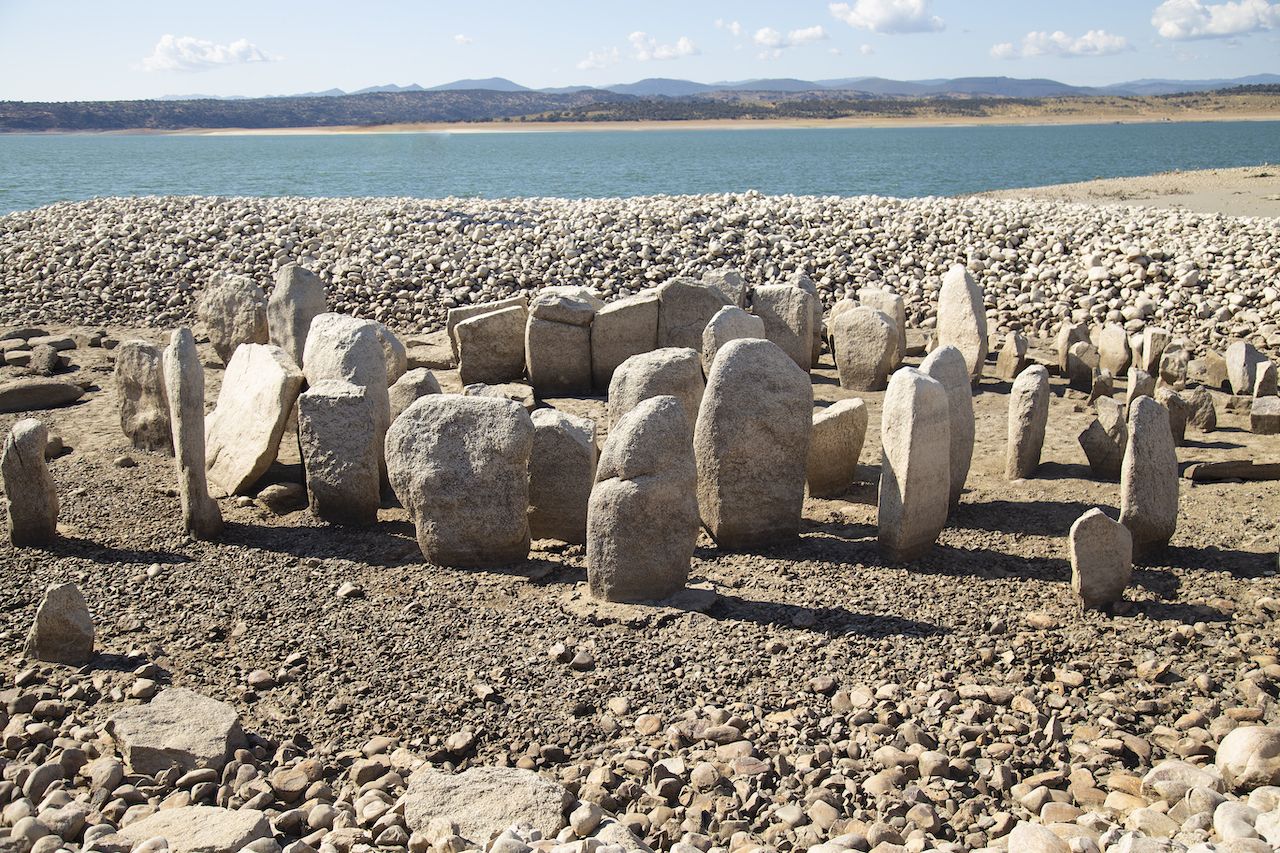
Photo: Raíces de Peraleda
Popularly known as the “Spanish Stonehenge,” the Dolmen of Guadalperal is a megalithic monument erected between 4,000 and 7,000 years ago near the modern-day city of Cáceres. Believed to have been used as a cemetery and temple, it once featured a series of tall standing stones known as menhirs, topped by horizontal slabs to form an enclosed tomb known as a dolmen.
Forty years after its excavation, the ruins were submerged beneath a reservoir — the result of a vast civil engineering project ordered by dictator Francisco Franco. But the ancient site simply refuses to stay lost. Summer 2019 saw Spain gripped by a drought so severe it caused the reservoir level to sink dramatically, once again exposing the stone circle. Around 140 granite slabs remain; some are still standing millennia after Guadalperal was first erected, while others now lie on their sides. At time of writing, the fate of the site remains unclear. The Spanish Ministry of Culture is under pressure to relocate the boulders to a permanently dry spot before the reservoir inundates them once more.
5. Kolmanskop, the diamond-mining town overtaken by the Namib desert
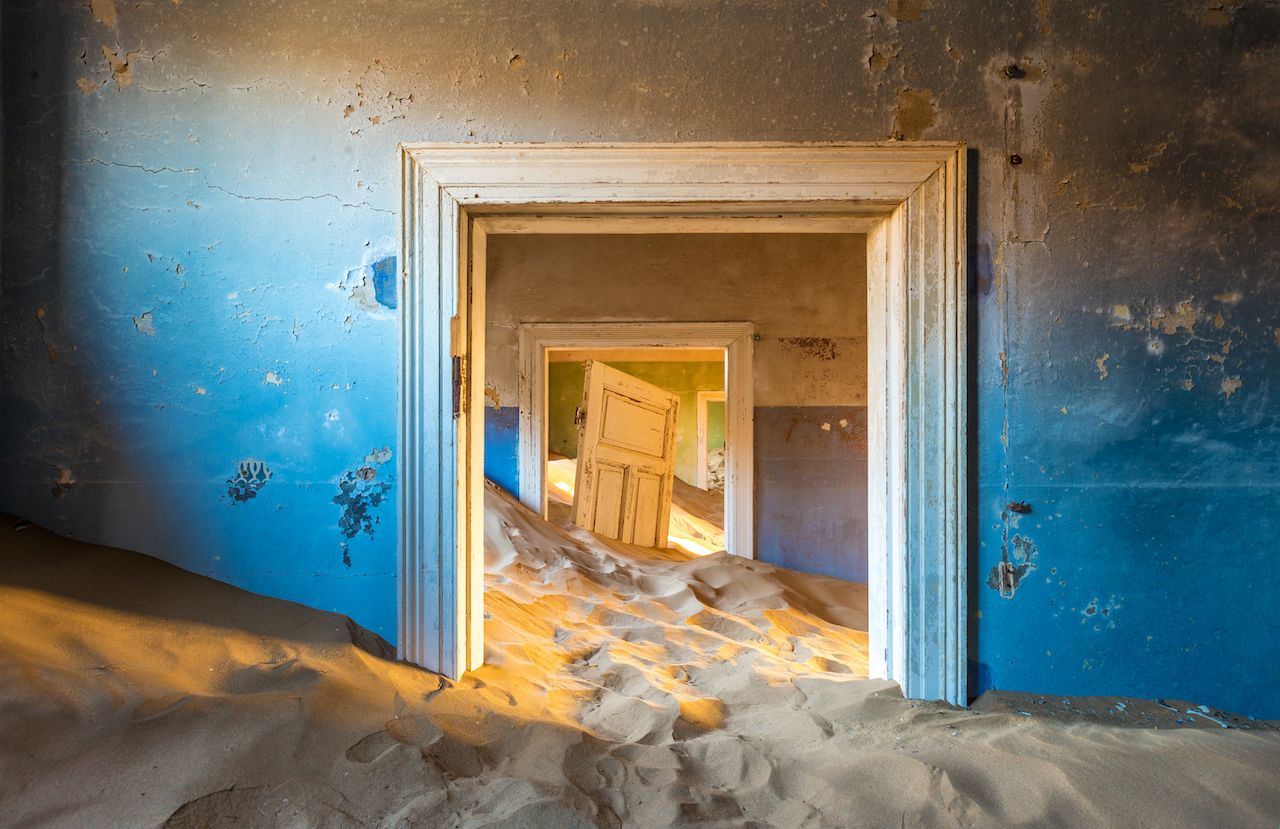
Photo: Kanuman/Shutterstock
The story of Kolmanskop is one of rapid growth followed by sudden demise. In 1908, a railway worker in the territory then known as German South West Africa discovered some interesting-looking stones while shoveling sand from train tracks in a barren part of the Namib desert. The stones were quickly confirmed to be diamonds, and by 1912, the town of Kolmanskop had been born. That year, the area was responsible for digging up one million carats of diamonds — more than a tenth of the world’s total annual production.
The harsh desert conditions in Kolmanskop — which receives just over half an inch of rainfall a year — didn’t deter would-be miners. A butcher, a baker, a post office, an ice factory, a concert hall, and even a skittle alley were quickly built to feed and entertain the workers. But this prosperity wasn’t to last. Soon, deposits ran low, but the real death knell for the town came with the 1928 discovery of the world’s richest diamond deposit just 170 miles to the south, on the banks of the Orange River. The final resident families moved out in 1956 and the sands of the Namib blew in. Today, the ghost town’s surreal remains can be explored by tourists prepared to make the trek to this isolated part of southwest Namibia.
6. Valle dei Mulini, Italy’s abandoned 13th-century mills
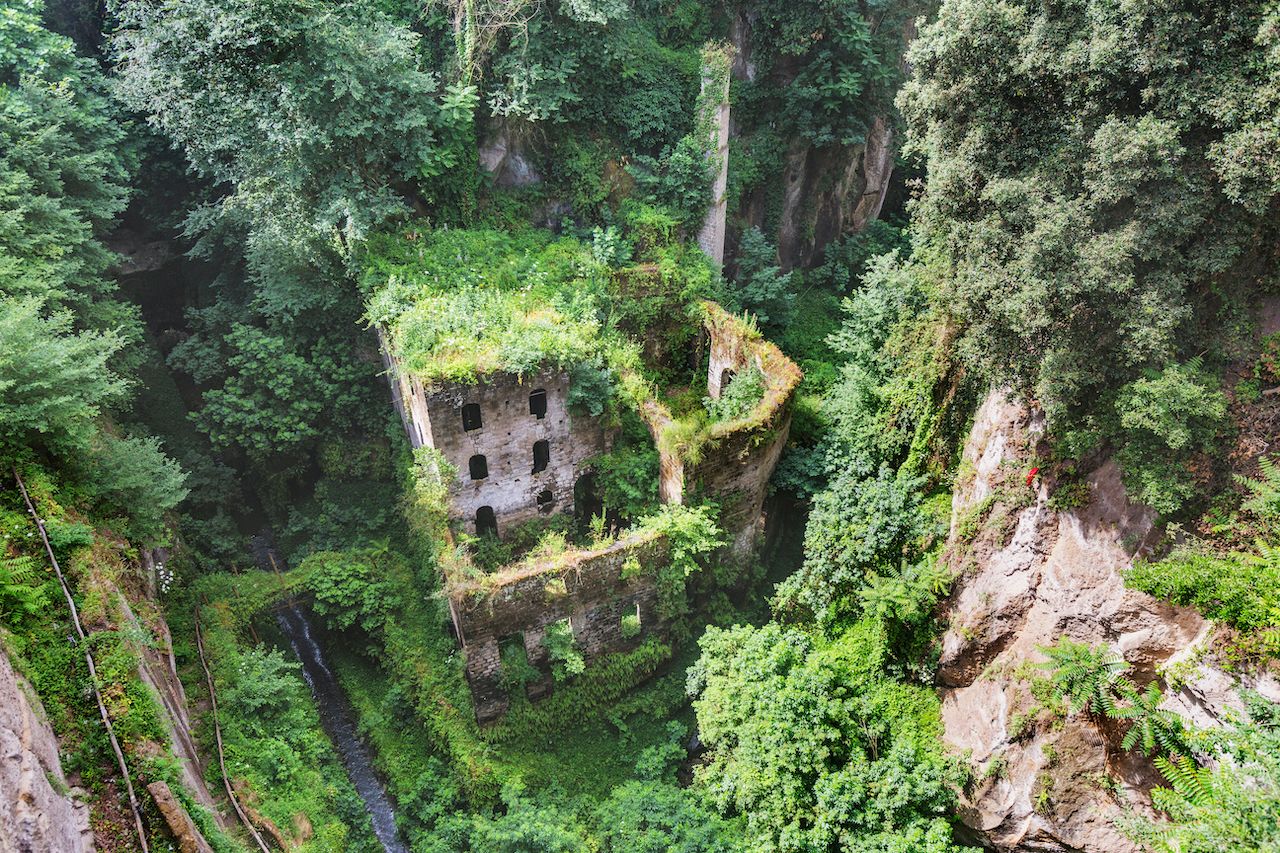
Photo: Crazy nook/Shutterstock
At the bottom of a deep canyon in the Italian coastal town of Sorrento, 30 miles south of Naples, stand the overgrown ruins of a Medieval tech hub. Built as far back as the 13th century, the buildings once housed flour mills, sawmills, and a wash-house for laundering clothes. They were erected in a vast fissure formed by a huge volcanic eruption 35,000 years ago.
The so-called Valle dei Mulini (Valley of Mills) remained a hotbed of industry in the region for centuries, but was eventually rendered obsolete after local pasta factories took over the flour-milling business. It was finally abandoned in the 1940s, allowing nature to move in. Thanks to the crevasse’s humid conditions, lush plant life soon took hold of the stone buildings, creating a verdant ghost town in the heart of modern-day Sorrento.
7. San Juan Parangaricutiro, the Mexican village buried by lava
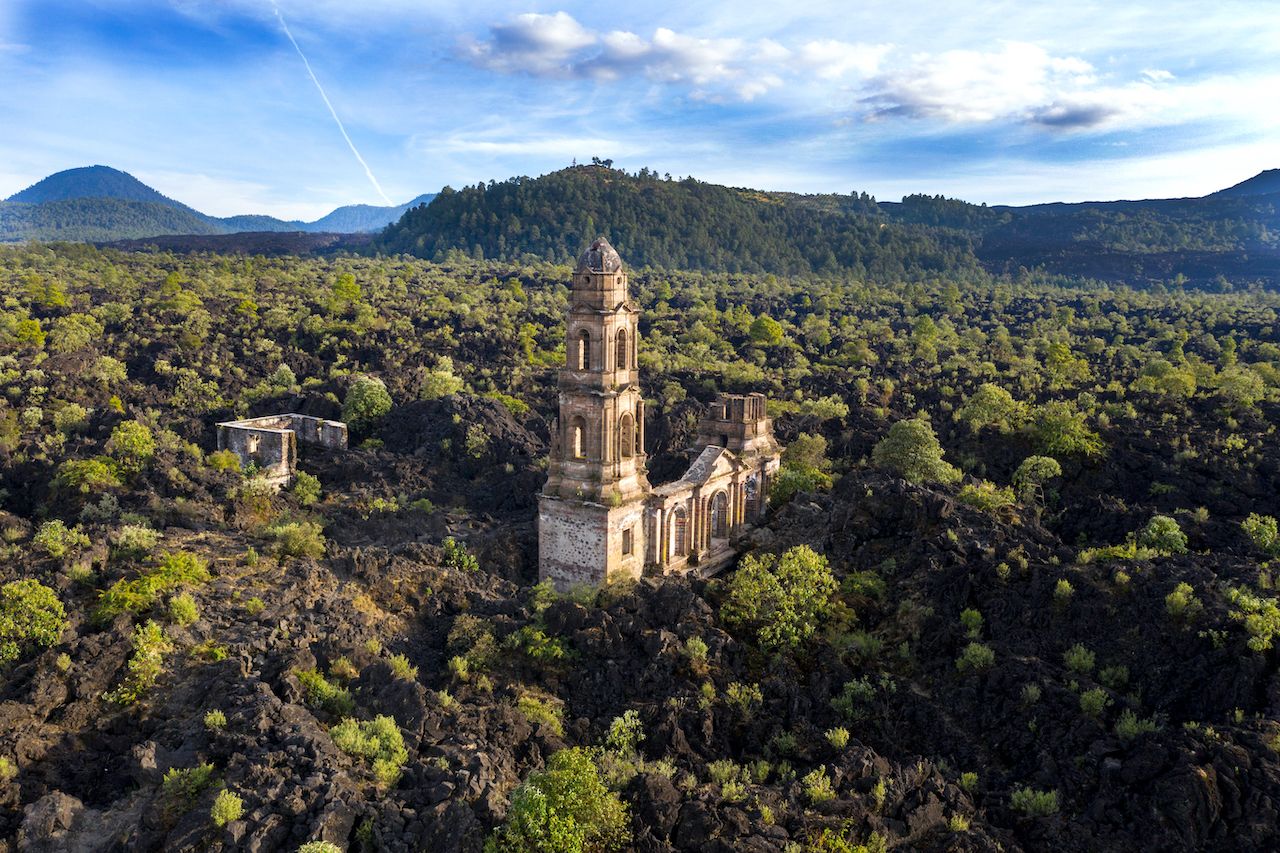
Photo: stacyarturogi/Shutterstock
In a spot previously occupied by a cornfield, the Parícutin volcano began surging from the earth in January 1943. The resulting eruption lasted for nine years; by the time it stopped, the town of San Juan Parangaricutiro had been wiped from the map, buried beneath dense layers of lava.
The church of San Juan Parangaricutiro is the only remaining symbol of the town of the same name that once stood in the Mexican state of Michoacán, before the eruption. The lava flows covered the first 30 feet of the church, but the rest of the building — including its impressive bell tower — remains. Unsurprisingly, it’s now one of the region’s biggest tourist attractions, and a major source of revenue for the nearby village of Nuevo San Juan Parangaricutiro, built by former residents of the original settlement in the wake of the eruption.